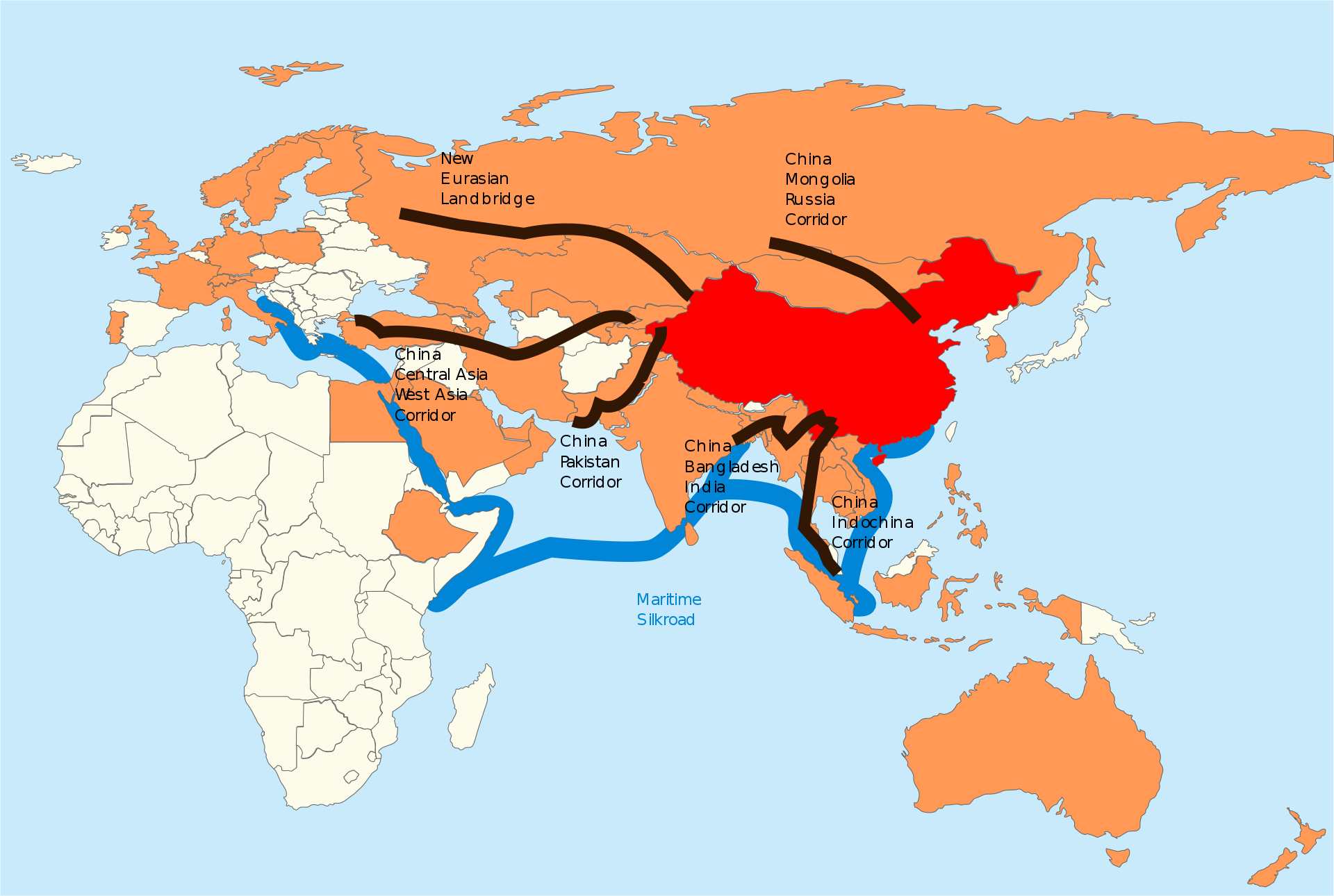Philippines exit from BRI
Context
- The Philippines has announced its exit from China’s Belt and Road Initiatives.
- The Philippines’ departure from the BRI is rooted in deep-seated bilateral issues concerning contested territories in the South China Sea.
What was the idea behind the BRI, and how did these goals evolve over the years?
- President Xi Jinping announced the Silk Road Economic ‘Belt’ during his visits to Kazakhstan in 2013.
- The ‘Belt’ plan was to revitalise a series of trading and infrastructure routes between Asia and Europe. Connectivity through Central Asia was a key element of the initiative.

- Subsequently, President Xi announced a sea trade infrastructure called ‘Road’. This maritime ‘Road’ would connect China with Southeast Asia, Europe and Africa.
- The major focus has been to build ports, bridges, industry corridors and other infrastructure throughout South East Asia and the Indian Ocean.
- For some time, together these initiatives were referred to as the One Belt One Road Initiative (OBOR). Since 2015, it has been mostly referred to as the BRI.
- Initially, the BRI was based on five principles:
-
- (1) policy coordination
-
- (2) infrastructure connectivity
-
- (3) trade
-
- (4) financial integration and
-
- (5) people-to-people connections.
- Later, the sixth principle of ‘Industrial cooperation’ was also added.
- Between 2013 and 2018, the World Bank estimated that investment in BRI projects including energy projects was about $575 billion. Earlier, the Organisation for Economic Co-operation and Development (OECD) also estimated that the BRI investment projects were likely to add $1 trillion in funding between 2017 and 2027.
- Some countries in Africa have praised the project, whereas the likes of India and the United States have accused China of engaging in ‘debt trap diplomacy’ – aiming to own countries’ assets if they are unable to repay the loans.
Current Status
- Building infrastructure is never risk-free. Any large initiative like the BRI having thousands of infrastructure projects will have many failures as well as success stories.
- India was the first to point out issues concerning debt trap, lack of transparency and sustainability of BRI projects. Later, the US and the EU also raised similar concerns.
- But there continues to be a huge infrastructure deficit in the Global South. So despite the criticism, BRI is still an attractive proposition to many developing countries in Asia, Africa and Latin America. Strong Chinese strategic financial support has played a crucial role.
- Economic conditions today are much more difficult than a decade ago. The Chinese have realised some weaknesses. They have already started talking about open, green and clean corridors and linking these projects with Sustainable Developments Goals. But if they follow these rules, some of the projects may not be feasible for funding.
- At the latest BRI forum held in Beijing earlier this month, a reduced number of heads of state was noticed compared to previous meetings.
China-Pakistan Economic Corridor (CPEC)
- The CPEC has been a flagship BRI project from the beginning. Pakistan is going through a very difficult political and economic phase. But despite some analysts indicating that CPEC projects may create long-term problems for the economy, Pakistan is unlikely to abandon the CPEC.
- The $60 billion CPEC is now central to China-Pakistan’s “all weather” strategic partnership and bilateral free trade agreement. A large part of the CPEC is energy-related projects. The rest of the projects are in the road and railway infrastructure and Gwadar port.
How does India view the BRI?
- India’s position on the BRI has remained relatively consistent since 2013. From the beginning, India had reservations about the BRI – mainly due to sovereignty-related issues, as the CPEC goes through the Pakistan-occupied Kashmir (PoK), and geopolitical implications of projects in the Indian Ocean.
- The importance of the Indian Ocean for China has increased significantly due to its expanding trade, energy transport and investments.
- China’s economic presence in India’s neighbourhood, including in South Asia, has already undergone substantial expansion. Moreover, many negative developments in broader India-China ties (trade deficit, border tensions, etc.) have also affected India’s perceptions of the BRI.
- While India has refrained from endorsing the BRI and has not taken part in any BRI Forums, it has been an active participant in the China-headquartered Asian Infrastructure Investment Bank (AIIB) since its inception.
- The Silk Road Fund (SRF) and the AIIB are the two main channels for BRI investment and financing. With about $10 billion in borrowing, which is about 20 per cent of AIIB’s total lending, India has emerged as a top market for the agency.
Subscribe
Login
0 Comments
